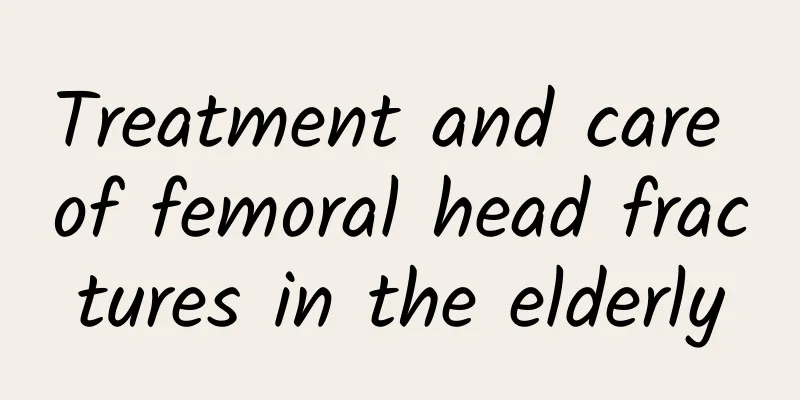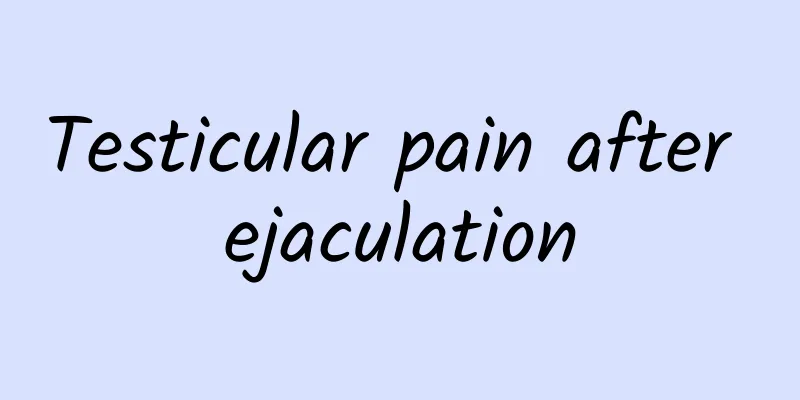Treatment and care of femoral head fractures in the elderly

|
Femoral head fractures are common in the elderly. This is because the hormone levels in the elderly decrease, the absorption and metabolism of nutrients are poor, and they are prone to osteoporosis, which makes the bones of the body fragile. How should we care for femoral head fractures in the elderly? 1. Treatment methods 1. Traction reduction: Suitable for patients with poor financial ability, poor physical condition, extremely old age, who cannot tolerate surgery or are unwilling to undergo surgery. 2. Traction reduction and multiple pin internal fixation: It is suitable for femoral neck fractures in patients under 65 years old. Although there is a 20%-40% incidence of femoral head necrosis, there is still a chance to undergo artificial joint replacement surgery. 3. Artificial femoral head replacement: Suitable for elderly patients over 70 years old who have multiple complications and poor ability to carry out daily activities. 4. Total hip replacement: Suitable for patients aged between 65 and 75 years old, in good health, and with an expected survival period of more than 10 years. 2. Nursing methods 1. Massage the patient's sacral and coccyx pressure areas with safflower oil every 2-4 hours to prevent bedsores. 2. Wear a cloth shoe with a horizontal wooden board nailed to the heel of the affected limb. The long axis of the wooden board is parallel to the foot of the bed and perpendicular to the shoe. It is also called a "T" shoe. Keep the affected limb in a neutral position to prevent external rotation of the foot. Pad the heel with cotton to prevent heel compression. 3. Encourage patients to drink plenty of water to prevent urinary stones; eat more vegetables and fruits to prevent constipation; eat easily digestible foods rich in protein and vitamins, such as broth, fish, eggs, milk, soy milk, etc., to promote fracture healing. 4. Pay attention to adjusting the room temperature, add or remove clothes for the patient in time to prevent colds; often help the patient to sit less; tap the back gently and encourage the patient to cough actively to avoid phlegm accumulation in the lungs and pneumonia. 5. Teach the patient to perform static contraction exercises on the thigh and calf of the affected limb, and also give appropriate massage to prevent muscle atrophy. 6. Encourage the patient to do some self-care activities, such as eating, drinking, combing hair, washing face, etc. Clean the perineum in time after urination and defecation, replace contaminated bed sheets in time, and maintain a good mental state of the elderly to accelerate the healing of fractures. 7. After 3 months, the patient can help the elderly to walk with the help of crutches. After half a year, the patient can move around indoors without crutches. After one year, the patient can go to the hospital for a follow-up examination and removal of the nails. |
<<: What are the symptoms of hypoglycemia and how to prevent it?
>>: Coccyx fracture symptoms and treatment
Recommend
Penis numbness after sitting for a long time
The penis refers to the male reproductive organ, ...
How to reduce a boy's big butt
Although boys don't seem to care about their ...
The harm of eating soy products for men
Nowadays, bean products are very popular. It is s...
Men with high stress may experience sexual dysfunction
There are many reasons why men's sexual funct...
What to do if your butt is loose? Simple exercises can help you have tight buttocks
Studies have shown that most women believe that m...
Can men take vitamin e soft capsules?
Vitamin E is a fat-soluble vitamin that has healt...
How to judge impotence, some common sense to help you judge whether it is impotence
If men feel powerless during sex, their erections...
Psychological erectile dysfunction, treatment principles should be mastered
There are many reasons for impotence, not only ph...
What to do if you have a stomachache while running? Be careful to prevent stomachache while running
As the saying goes, life lies in exercise. Runnin...
Is okra useful for strengthening the kidneys and boosting yang?
To nourish the kidney and strengthen yang, it is ...
Genitals have a bit of a bad smell
The odor of the glans penis is actually a common ...
The testicles become hard and it doesn't hurt to pinch them
The most sensitive part of the male body is proba...
How to treat body weakness after ejaculation
Modern people are under increasing pressure. Whet...
What causes kidney deficiency in men?
We often joke with our friends about whether they...
Men's Autumn Skin Care
Loving beauty is no longer just a female thing. M...









